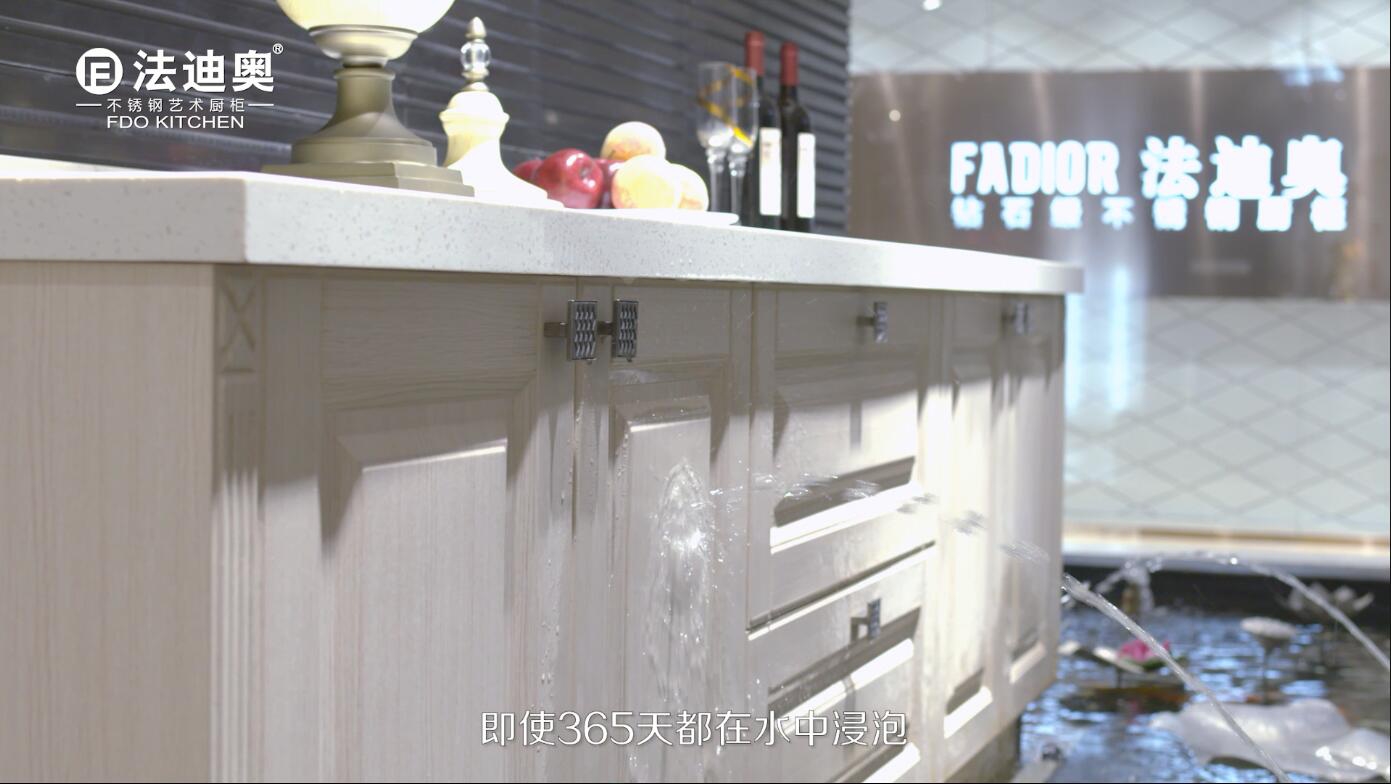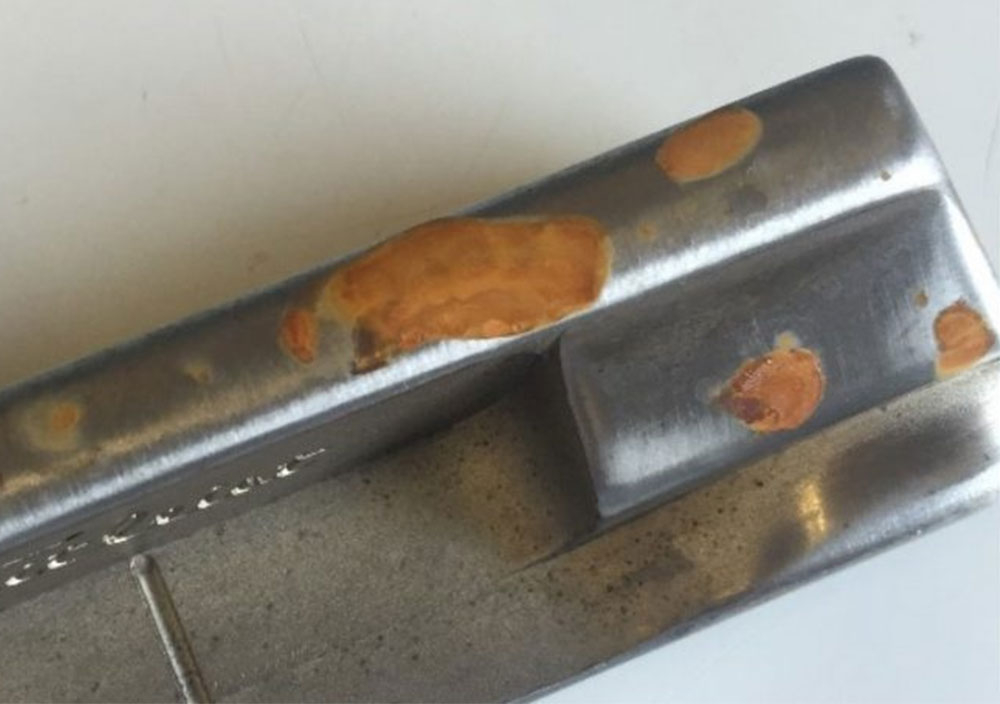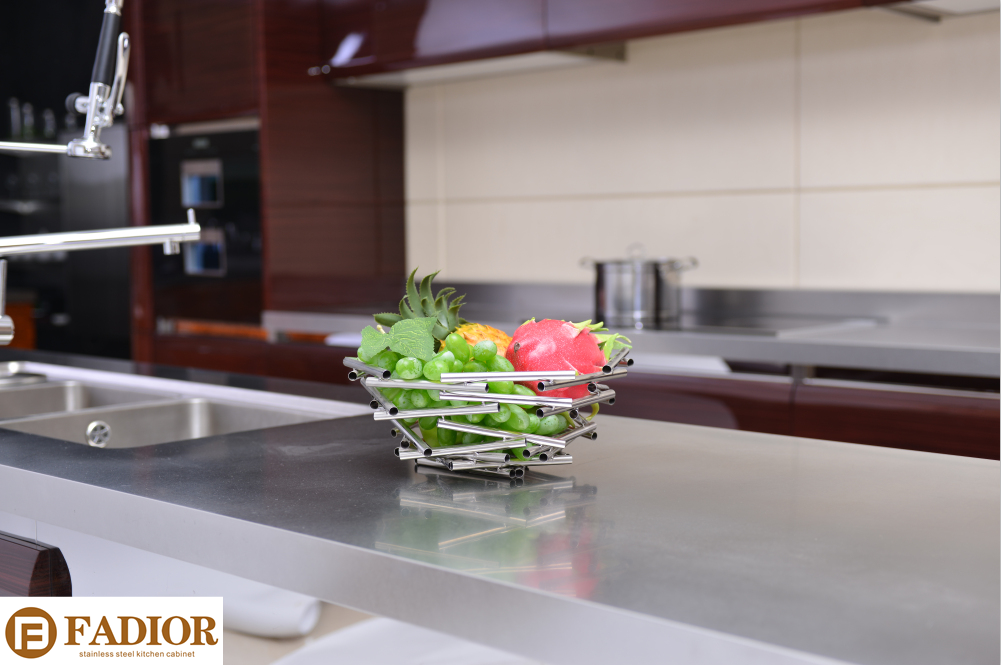This is a 304 stainless steel kitchen soaked in water for almost 2 years in our FADIOR showroom there are some traces of water stains, but after cleaning, there is no rust at all. This is a big difference compared with 201 stainless steel.

Why do some stainless steel also rust?
People often feel surprised when there are brown rust spots on the stainless steel surface. It is generally believed that stainless steel does not rust. In fact, this is a one-sided misconception about the lack of understanding of stainless steel. Stainless steel is not completely rust-free, but depends on composition of chromium and nickel. Nickel has strong anti-rust ability, which directly affects hardness and corrosion resistance. Also, because the number of nickel ore is very small (only produced in 15 countries in the world), stainless steel with high nickel content is naturally more expensive because of its strong rust resistance, and stainless steel pipes made with 201 stainless steel, its nickel component is only 1/8 of that of 304 stainless steel, so the price is also much different. Generally, bathroom in the home, kitchen utensils, teapot for boiling water, water dispenser, etc., are all made of 304 stainless steel.

Some suppliers claim theirs are 304 stainless steel furniture, consumers are difficult to distinguish from the appearance, but after bought back and use for 2-3 years, you can tell the quality of furniture.
304 stainless steel is rust-proof because it contains higher content of chromium and nickel, so the surface will naturally form a layer of chrome blunt film to block the oxygen in the air, making it resistant to atmospheric oxidation - known as rust resistance.
How to identify 304 stainless steel?
People often think that the magnet can verify the authenticity of its 304 steel. In fact, it is not entirely correct. There are many types of stainless steel, which can be divided into several categories according to the organizational structure at room temperature:
1. Austenitic type: such as 304, 321, 316, 310, etc.; austenite type is non-magnetic or weak magnetic
2. Martensite or ferrite type: such as 430, 420, 410, etc.; martensite or ferrite is magnetic.
Most of the stainless steel used as bathroom, tableware and furniture is austenitic 304 material. Generally speaking, it is non-magnetic or weak magnetic, but why is it magnetic? This is because the composition is segregated or treated during smelting. In a different way, the chemical composition fluctuates and magnetic properties occur, thus causing a small amount of martensite or ferrite structure in the austenitic 304 stainless steel. Therefore, it is impossible to distinguish by magnetic.
The 304 stainless steel is cold-worked, and the micro structure is also transformed into martensite. The greater the degree of cold work deformation, the more the martensite transformation is, the more magnetic the steel is. Like a batch of 304 steel strip, it produces Φ76 tube, no obvious magnetic sense, and if produces Φ9.5 tube, due to the large deformation of the bending, the magnetic induction is obvious. The rectangular tube produced is more magnetic than the round tube, especially the angled part. However, even though the 304 stainless steel is magnetic due to the above reasons, it is still completely different from the magnetic properties of 430 or 201 steel, which means that the magnetic properties of 304 steel always show weak magnetic properties.
This also tells us that if the stainless steel strip is weakly magnetic or not magnetic at all, it should be judged to be 304 or 316 material; but if it is magnetically the same as carbon steel, it can be judged as not being 304 material.

In addition, although the 304 stainless steel blunt film is naturally generated, if the blunt film is destroyed faster than the formation speed, it may still rust itself. So to ensure that the metal surface is permanently bright and not rusted, we recommend:
1. The stainless steel surface must be cleaned and wiped regularly to remove the deposits.
2. Understand the model and place of origin of your purchase, the raw materials are not necessarily the same.
Our advice is still that when you choose to buy stainless steel products, the manufacturer has the obligation to explain clearly, or you can ask the manufacturer to show the original material certificate, so that you can understand the quality and buy the product you really want!
For us, FADIOR stainless steel kitchen cabinet, we can ensure all material used is 304 grade stainless steel, for both the carcass and door, even the small screws, thus to bring our customers a perfect quality kitchen which is 100% water-proof and can last for 30 years above!

